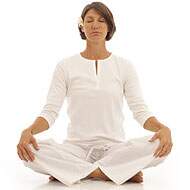Do not let a Broken Toe Stop Your Yoga Routine
A broken toe can be excruciating. Whether it's a minor fracture that requires splinting or a full injury that requires a cast or even surgery, healing the toe in question will take time and patience. In most cases, you will need to keep the pressure off the foot and no weight on the injured toe.
In effect, this cancels out a whole host of different exercises that you can perform. Needless to say, you can postpone running or walking and aerobics until your toe has completely healed. One exercise option still open for you and your broken digit however is yoga.
Now you may wonder how exactly you will handle a complete yoga sequence without putting any pressure on your toe. Well, under the supervision of a trained and experienced yoga teacher, a yoga sequence that involves largely sitting and lying down poses can be specially designed for you. While standing exercises or balancing and inverted poses can put too much pressure on your foot, you should also avoid exercises which bend and flex your toes. Other yoga poses to avoid with a broken toe include standing lunges, and the "downward facing dog". Modifications of these poses may include lifting the injured foot of the ground during the pose. However, this takes some experience and muscle strength, so do not try these if you are a novice at yoga. If you are able to put some weight on your foot and the injury is not too severe, you can try supine back bends and forward bends. You can also try these poses in the kneeling position for a more comfortable alternative. If the pain is too much, you must avoid these poses until you have fully recovered.
Certain types of yoga may be more beneficial towards your recovery than others. "Bikram yoga" or "hot yoga" performed in a heated room warms up the muscles and loosens the joints thereby preventing further injury. "Iyengar yoga" uses several props such as chairs, belts and blocks that may help relieve pressure on the injured foot. There are also several yoga poses that can be performed seated instead of standing. In addition to these, "Pranayama" and breathing techniques can help take the focus off your pain and speed up the recovery process. Always consult your doctor before beginning any new exercise routine and keep your yoga instructor informed of any pain or discomfort during the class.
Read more articles from the General Discussion Category.

 Find Pose
Find Pose

